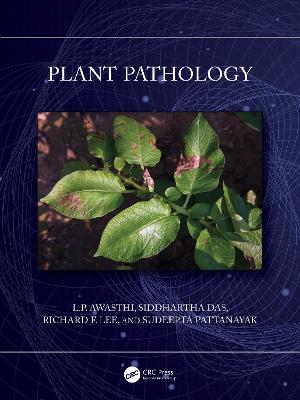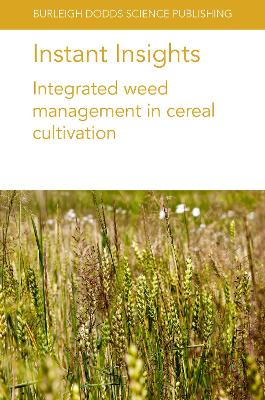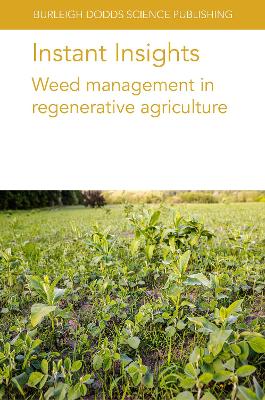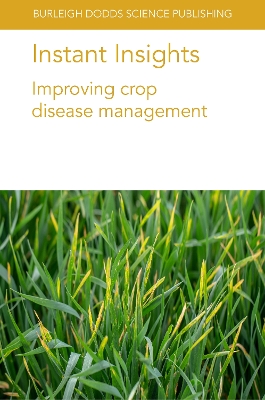Instant Insights: Septoria Tritici Blotch in Cereals
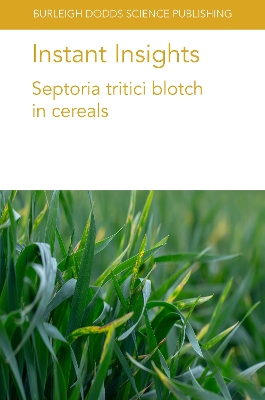 portes grátis
portes grátis
Instant Insights: Septoria Tritici Blotch in Cereals
Effertz, Dr Karl; Sharma Poudel, Dr Roshan; Raman, Prof Harsh; Karakaya, Dr Aziz; Goodwin, Dr Stephen B.; Ameen, Dr Gazala; Brueggeman, Dr Robert; Solanki, Dr Shyam
Burleigh Dodds Science Publishing Limited
02/2022
164
Mole
Inglês
9781801463195
15 a 20 dias
Chapter 2 Fungal diseases affecting barley: Robert S. Brueggeman, Shyam Solanki, Gazala Ameen and Karl Effertz, Washington State University, USA; Roshan Sharma Poudel, North Dakota State University, USA; and Aziz Karakaya, Ankara University, Turkey; 1 Introduction 2 Understanding plant genetic resistance to fungal pathogens 3 Biotrophic foliar diseases: stem rust 4 Leaf rust 5 Stripe rust 6 Powdery mildew 7 Necrotrophic diseases: spot blotch 8 Net blotch 9 Ramularia leaf spot 10 Septoria speckled leaf blotch 11 Scald 12 Fusarium head blight 13 A seed-borne disease: barley stripe 14 Conclusion 15 References
Chapter 3 Advances in understanding the epidemiology of Septoria tritici blotch in cereals: Stephen B. Goodwin, USDA-ARS, USA; 1 Introduction 2 What's in a name: taxonomy of Z. tritici 3 Life cycle of Z. tritici 4 Mode of nutrition 5 Epidemiology 6 Diagnostics 7 Conclusion and future trends 8 Where to look for further information 9 References
Chapter 4 Advances in breeding techniques for durable Septoria tritici blotch (STB) resistance in cereals: Harsh Raman, NSW Department of Primary Industries, Australia; 1 Introduction 2 Challenges in achieving durable resistance: qualitative and quantitative resistance 3 Molecular marker technologies for genetic mapping of Septoria tritici blotch resistance genes 4 Ways of increasing durability of resistance: planting of varietal mixtures 5 Ways of increasing durability of resistance: deployment of qualitative resistance genes 6 Ways of increasing durability of resistance: pyramiding of qualitative and quantitative resistance genes 7 Ways to increase durability of resistance: manipulation of plant architecture genes and deployment of multiple resistance loci 8 Marker-assisted selection (MAS) and genomic selection (GS) for Septoria tritici blotch resistance breeding 9 The use of genetic transformation and gene editing techniques 10 Conclusion and future trends 11 References
Chapter 2 Fungal diseases affecting barley: Robert S. Brueggeman, Shyam Solanki, Gazala Ameen and Karl Effertz, Washington State University, USA; Roshan Sharma Poudel, North Dakota State University, USA; and Aziz Karakaya, Ankara University, Turkey; 1 Introduction 2 Understanding plant genetic resistance to fungal pathogens 3 Biotrophic foliar diseases: stem rust 4 Leaf rust 5 Stripe rust 6 Powdery mildew 7 Necrotrophic diseases: spot blotch 8 Net blotch 9 Ramularia leaf spot 10 Septoria speckled leaf blotch 11 Scald 12 Fusarium head blight 13 A seed-borne disease: barley stripe 14 Conclusion 15 References
Chapter 3 Advances in understanding the epidemiology of Septoria tritici blotch in cereals: Stephen B. Goodwin, USDA-ARS, USA; 1 Introduction 2 What's in a name: taxonomy of Z. tritici 3 Life cycle of Z. tritici 4 Mode of nutrition 5 Epidemiology 6 Diagnostics 7 Conclusion and future trends 8 Where to look for further information 9 References
Chapter 4 Advances in breeding techniques for durable Septoria tritici blotch (STB) resistance in cereals: Harsh Raman, NSW Department of Primary Industries, Australia; 1 Introduction 2 Challenges in achieving durable resistance: qualitative and quantitative resistance 3 Molecular marker technologies for genetic mapping of Septoria tritici blotch resistance genes 4 Ways of increasing durability of resistance: planting of varietal mixtures 5 Ways of increasing durability of resistance: deployment of qualitative resistance genes 6 Ways of increasing durability of resistance: pyramiding of qualitative and quantitative resistance genes 7 Ways to increase durability of resistance: manipulation of plant architecture genes and deployment of multiple resistance loci 8 Marker-assisted selection (MAS) and genomic selection (GS) for Septoria tritici blotch resistance breeding 9 The use of genetic transformation and gene editing techniques 10 Conclusion and future trends 11 References


